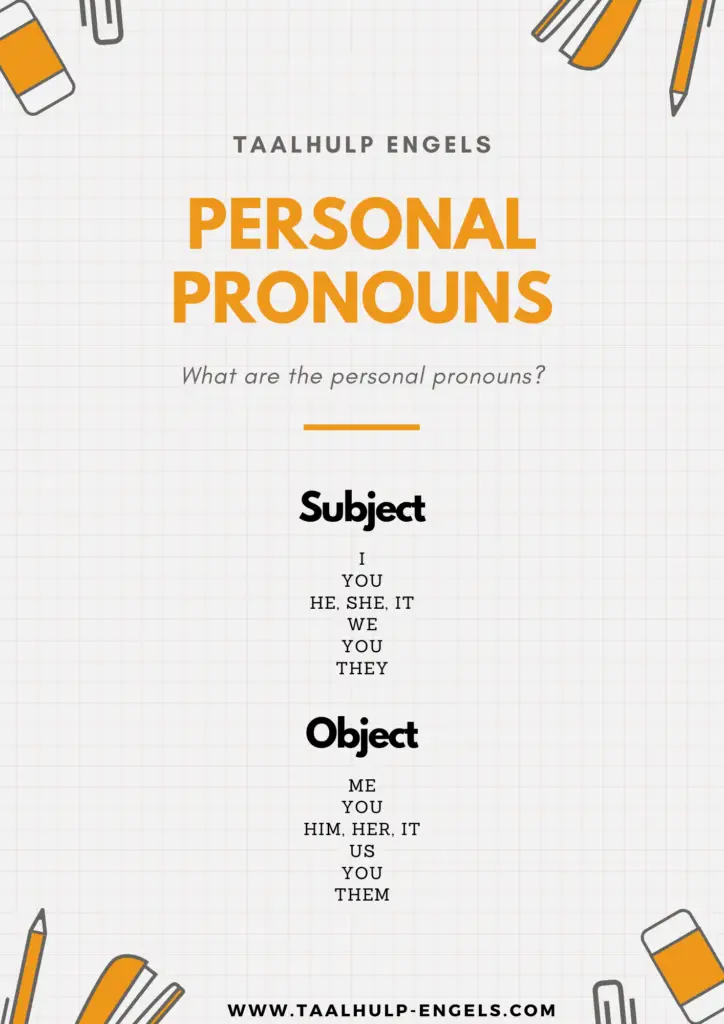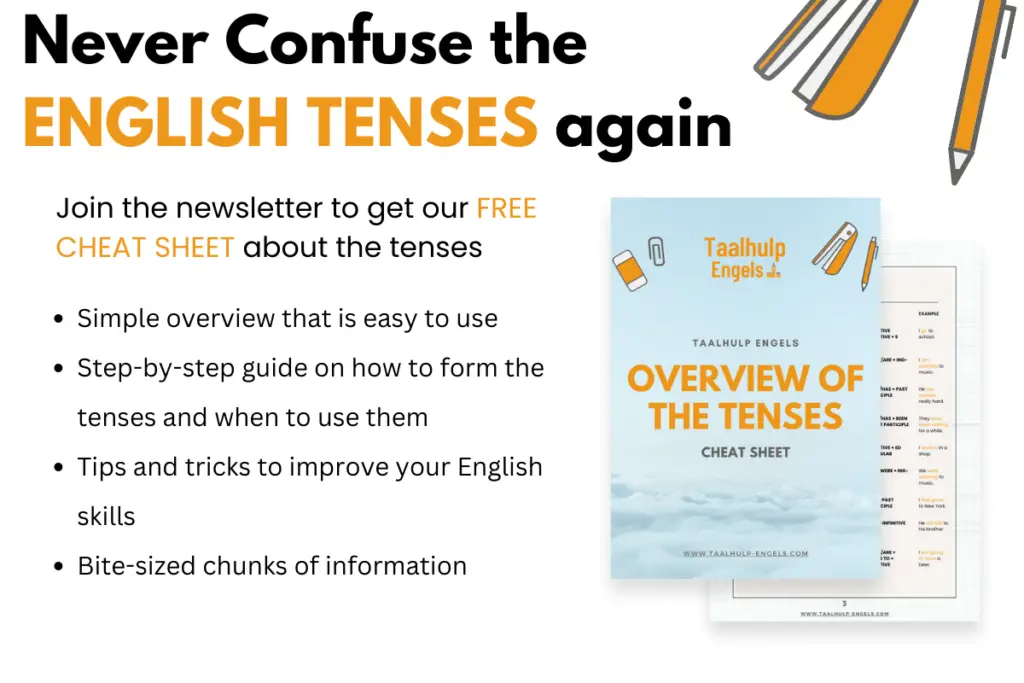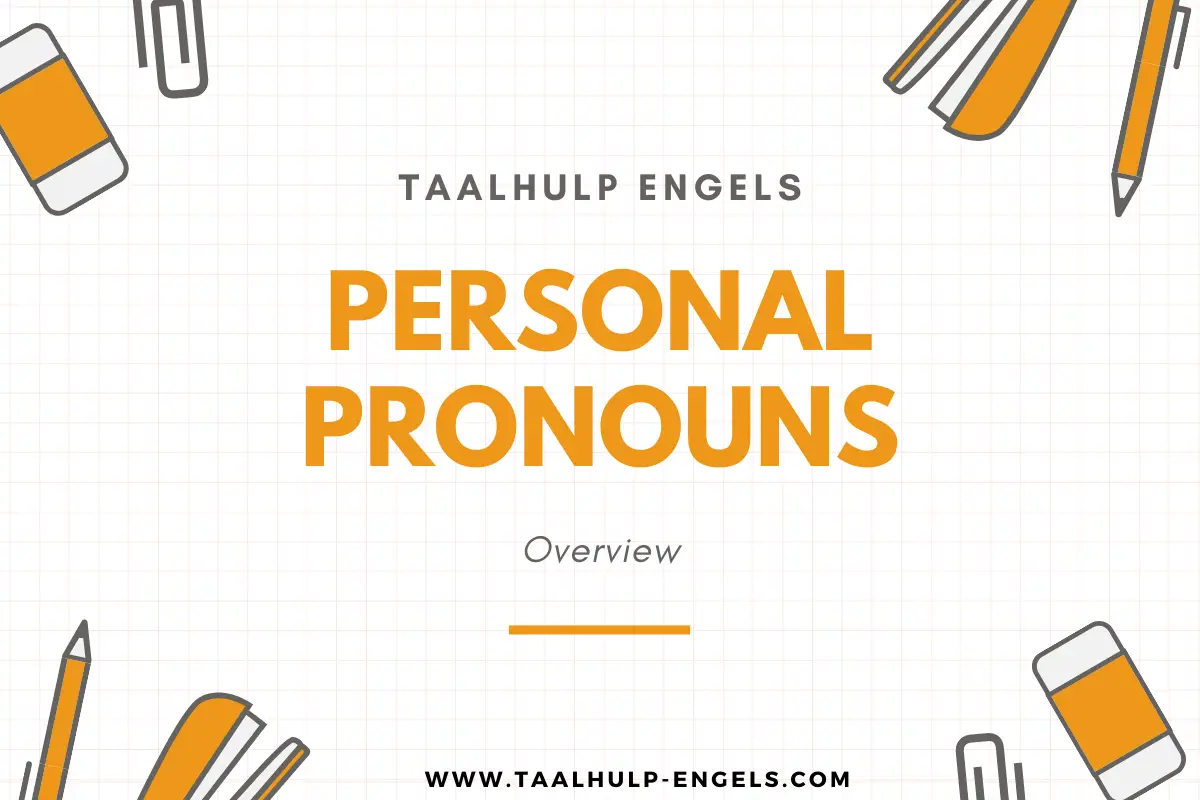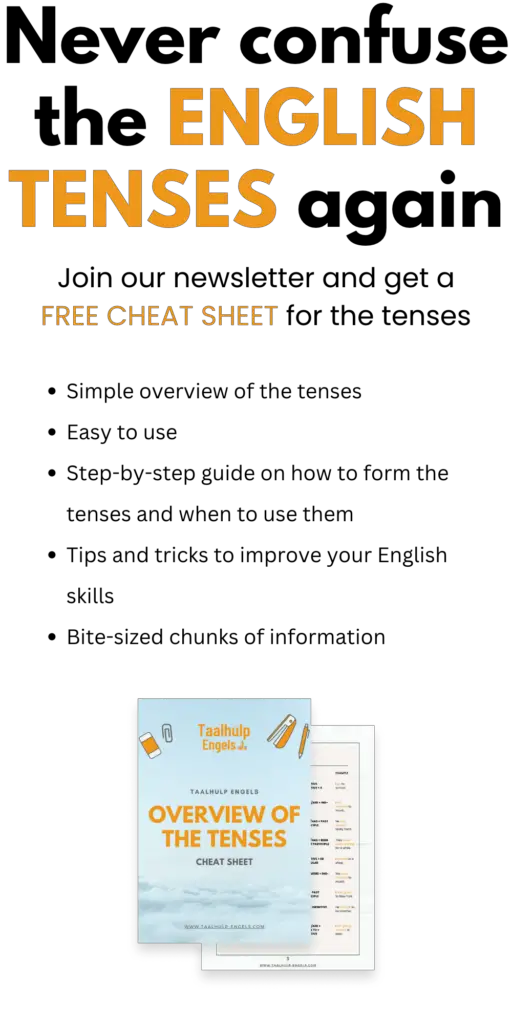One of the first things you pick up when learning English is personal pronouns. Every language has them and they make it a lot easier to have fluent conversations. On this page, you have a complete overview of what personal pronouns are and when to use them.
What are personal pronouns?
Personal pronouns are short words you can use to refer to a thing, animal, person, or group of people without using names. This means that personal pronouns are words to talk about things and people. You use them in a particular context so it is clear who or what you are talking about.
Personal pronouns in English
In English, you have two types of personal pronouns: personal pronouns to talk about the subject and personal pronouns to talk about the object in a sentence.
| Subject | Object |
|---|---|
| I | Me |
| You | You |
| He, she, it | Him, her, it |
| We | Us |
| You | You |
| They | Them |
If you look at the table above, you can see that ‘you’ (both singular and plural) uses the same form to talk about a subject and object.


The difference between ‘I’ and ‘me’, for example, has to do with the function in the sentence. When you use a personal pronoun to talk about the subject in a sentence, you use the first column. If you use a personal pronoun to talk about an object, you use the second column.
I or me
You use the personal pronoun ‘I’ to talk about the first person singular. It’s important to always write this personal pronoun with a capital letter, even when it’s used in the middle of a sentence.
‘Me’ is used when you want to talk about the first person singular as the object of a sentence.
| I am the boss. |
| He hates me. |
You
‘You’ is used when you are talking about the second-person singular and plural forms. There is no difference between subject and object for this form.
| You are the boss. |
| He hates you. |
‘You’ can also be used to refer to something in a general sense.
| You can buy food here. |
| You can walk in the park. |
If you want to be really formal, you can replace ‘you’ in the sentences above with ‘one’.
| One can buy food here. |
| One can walk in the park. |
He, she, it or him, her, it
‘He’ and ‘she’ are used to talk about someone or something in the third-person singular form. ‘He’ is for males, ‘she’ for females. The same applies to ‘him’ and ‘her’.
| He is friendly. |
| I love her. |
| She eats a lot. |
‘It’ is used to refer to things or to talk about things in general.
| It is cold today. |
| It is getting hot in here. |
| Have you seen it? |
We or us
‘We’ is used for the second plural form when you are talking about the subject. If you are talking about the object in the sentence, you use ‘us’.
In some cases, it’s also possible to talk about yourself by using ‘we’, although this is not that common. This phenomenon is described as the ‘royal we’. In the examples below, Queen Victoria is talking about herself.
| We are not interested in the possibility of defeat. |
| We are not amused. |
They or them
‘They’ is used to talk about the third person plural form and when you are talking about the subject of a sentence. In some cases, ‘they’ is also used to talk about organisations. You use ‘them’ when you are talking about the object.
| They are rich. |
| I helped them. |
| They are going to buy a car. |
Examples
| Subject | Object |
|---|---|
| He killed her. | She was killed by him. |
| They are buying food. | He told them to buy food. |
| We always drink soda. | They encouraged us to drink soda. |
| I like pizza. | He really scared me. |




